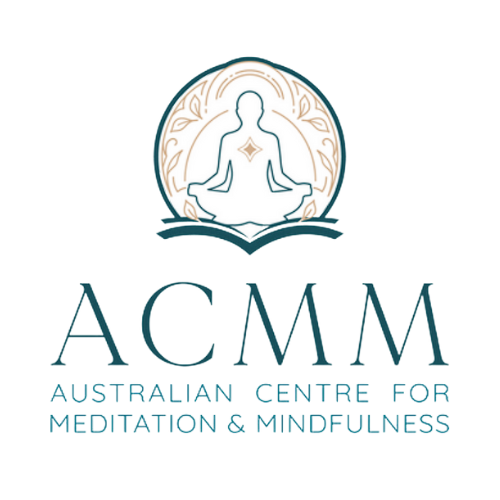This month ACMM Coach Tim James shares his tips on how to create a successful workplace mindfulness program! After managing an engineering company, his own consulting company and then a charitable organisation in Adelaide for several years, Tim now works solely as a meditation teacher in the corporate space, teaching community groups and as a coach with ACMM.
Let’s dive straight into it!
Here’s my top 10 tips to create a successful workplace mindfulness program.
TIP NUMBER ONE
Clarify what you want – why you’re entering into the corporate meditation and mindfulness market and what success looks like to you. Super important to start with a sense of this as it can be a lot of work to dive in and get started. Your why may just help to keep your energy flowing while you ‘do the work’. It also respects your future clients when you engage with them from a place of clarity for what you bring and offer.
TIP NUMBER TWO
Get your runs on the board – Run community groups, volunteer to guide meditations, engage in the meditation sector in general. It’s fun, beneficial for all, including yourself and there’s a possibility that some of the people you engage with will work for your target corporate market. It may be a slow organic approach, but it feels good and comes without expectations. That way you are bringing your loving attention to the community and allowing what will be.
TIP NUMBER THREE
Get yourself on LinkedIn – If you’re not already just do it and actively engage with other meditation teachers in your city online & in-person. Create and grow your network, meet people and discuss meditation stuff relevant to them and you. Listen, listen and listen some more, be there for them – give openheartedly without expectation. We meditation teachers are generally happy to collaborate and share all sorts of information to support one another – including pricing! There’s no competition in this space only cooperation and collaboration.
TIP NUMBER FOUR
Understand your value and be open to asking for what you want. Getting runs on the board will help to build a depth and understanding of your value. As well, give yourself permission to charge for the amazingness that you’re delivering and for the years of experience and learning that’s gone into equipping you with the understanding and skills to guide and teach others meditation and mindfulness. Ask friends and family too for introductions to their workplaces. At worst it’ll be a no, but you will have planted a seed and who knows when it may grow! At best, well the door gets opened. Yay!
TIP NUMBER FIVE
Clarify and research your target audience and develop a basic marketing plan – Some of the ‘work’ mentioned before. Marketing Plan templates are available on the net, or ACMM provide one through our Marketing Masterclass and we work through a brief plan in the Corporate Meditation and Mindfulness Elective.
TIP NUMBER SIX
Work on your business documents. Eg. Marketing, Quotation format, Measurement tools, Presentations/Workshops, Run Sheets and Handouts – Wohooooo, more of the ‘work’. To me this is fun stuff, because it’s tangible and means you’re getting closer to delivering and sharing your amazingness with clients. We develop a number of these in the Elective. The great part is, when you’ve done it once, you can then tailor your existing documents to suit new clients.
TIP NUMBER SEVEN
Research costing and pricing – A big unknown for many and yet incredibly important. So do the research on the net, with your network, with fellow meditation teachers to get a handle on approximate pricing for your market and offering. As well, understand the costs of your business and how much you need to make a profit from each job.
TIP NUMBER EIGHT
Listen, listen, listen to your clients and clarify their needs – Can’t be emphasised enough! Ask questions such as, How can I best support your organisation? What does a successful outcome look like to you? Have you run meditation/mindfulness programs before? What worked and what would you like to see done differently?
TIP NUMBER NINE
Develop a program that meets those needs and as best as possible is backed by research –Research can be found on the net covering many aspects of Meditation / Mindfulness in the Workplace. We share a lot in the Elective! Use it to inform the development and delivery of your program, always with the client and participant needs at the forefront. Of course, research is best done when it’s directly on your program, but we have to start somewhere and generic research on the benefits of meditation and mindfulness in the workplace can be utilised in context. Provide references for any research listed.
TIP NUMBER TEN
Keep programs simple, easy to engage with and clear – Simple in of itself makes it easier for participants to engage with. Meditation and mindfulness outcomes can be profound and creating space in your program to allow for and hold these outcomes is important. Listen to feedback and tweak your programs to best suit the needs.
2 Bonus tips!
TIP NUMBER ELEVEN
Be flexible and easy to work with – If you are, you’re more likely to be invited back. Examples are being flexible to providing in-person and online sessions and updating your systems to allow for less administration for the client.
TIP NUMBER TWELVE
Measure what you do – A Biggie! This is such a key to quality programs, as well as gaining repeat work. Just do it. It’ll mean more research and development of suitable measuring tools, but it’s worth it. Measure program performance against specific client needs and be open to designing your measuring tools in collaboration with the client. That way you ensure you are measuring what is important to them!
You can access a deeper dive into each and more through the ACMM Corporate Meditation and Mindfulness Elective. This forms part of the Advanced Certificate in Guiding and Teaching Meditation and Mindfulness.







